#Edward Henry Molyneux
Explore tagged Tumblr posts
Text
23 marzo … ricordiamo …
23 marzo … ricordiamo … #semprevivineiricordi #nomidaricordare #personaggiimportanti #perfettamentechic
2021: George Segal, attore e musicista statunitense. (n. 1934) 2020: Lucia Bosè, pseudonimo di Lucia Borloni, è stata un’attrice italiana naturalizzata spagnola, eletta Miss Italia 1947. È morta a causa di una polmonite complicata dal COVID-19. (n. 1931) 2019: Domingos de Oliveira, è stato un attore, drammaturgo, regista, sceneggiatore e regista teatrale brasiliano. E’ stato sposato con Leila…

View On WordPress
#23 marzo#Adrienne Koenig#Balenciaga#Cédric Ragot#Charlotte Ganahl Walker#Charlotte Walker#Cino Tortorella#Cristobal Balenciaga#Debbie Lee Carrington#Deborah Lee Carrington#Domingos de Oliveira#Edward Henry Molyneux#Edward Molyneux#Elizabeth Taylor#Felice Tortorella#George Segal#Gian Vittorio Baldi#Giulia Anna Masina#Giulietta Masina#Ken Howard#Kenneth Joseph "Ken" Howard Jr.#Lauretta Masiero#Lola Albright#Lola Jean Albright#Lucia Borloni#Lucia Bosè#Mae Murray#Paco Rabanne#Ricordiamo
0 notes
Text
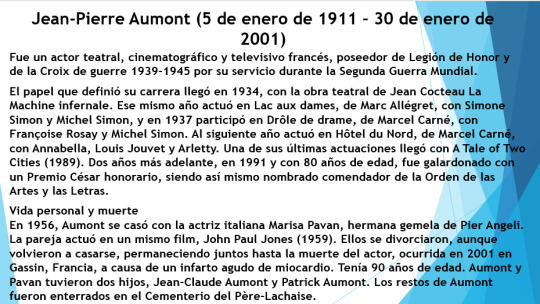


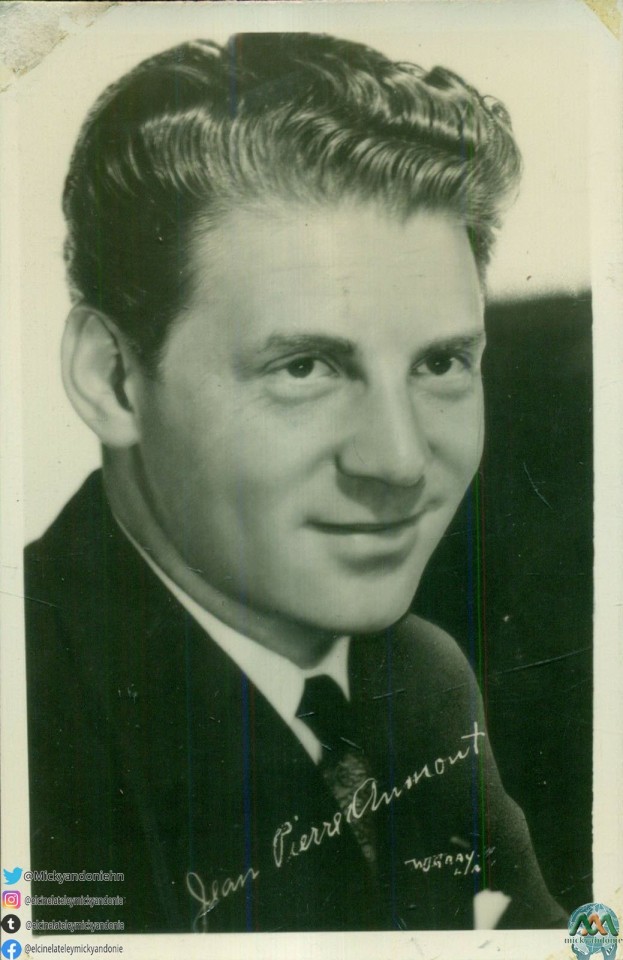
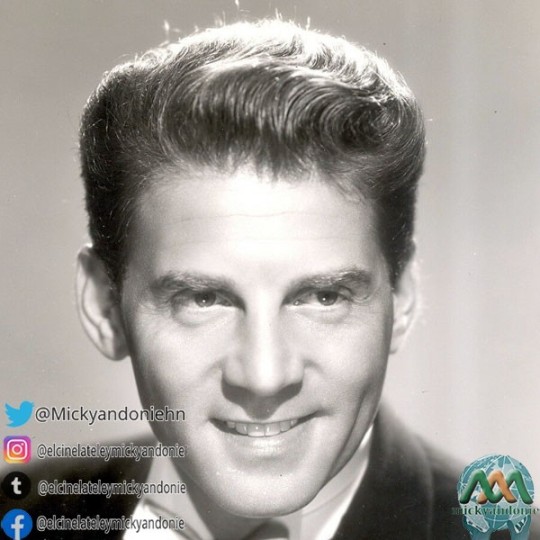

Jean-Pierre Aumont.
Filmografía
Cine
1931 : Jean de la Lune, de Jean Choux, con Michel Simon y Madeleine Renaud
1931 : Échec et mat, de Roger Goupillières
1932 : Faut-il les marier ?, de Pierre Billon y Karel Lamač
1933 : Dans les rues, de Victor Trivas
1933 : Un jour viendra, de Gerhard Lamprecht y Serge Véber
1933 : La Merveilleuse Tragédie de Lourdes, de Henri Fabert
1933 : Ève cherche un père, de Mario Bonnard
1934 : Lac aux dames, de Marc Allégret, con Simone Simon y Michel Simon
1934 : Le Voleur, de Maurice Tourneur, con Victor Francen
1934 : Maria Chapdelaine, de Julien Duvivier, con Madeleine Renaud y Jean Gabin
1935 : Les Yeux noirs, de Victor Tourjansky, con Harry Baur, Viviane Romance y Simone Simon
1935 : L'Équipage, de Anatole Litvak, con Annabella y Charles Vanel
1935 : Les Beaux Jours, de Marc Allégret, con Simone Simon y Raymond Rouleau
1936 : Tarass Boulba, de Alexis Granowsky, con Harry Baur y Danielle Darrieux
1936 : La Porte du large, de Marcel L'Herbier, con Victor Francen
1937 : Le Chemin de Rio, de Robert Siodmak, con Jules Berry y Suzy Prim
1937 : Drôle de drame ou L'étrange aventure de Docteur Molyneux, de Marcel Carné, con Louis Jouvet y Michel Simon
1937 : Le Messager, de Raymond Rouleau, con Jean Gabin y Gaby Morlay
1937 : Maman Colibri, de Jean Dréville
1937 : La Femme du bout du monde, de Jean Epstein, con Charles Vanel
1938 : Chéri-Bibi, de Léon Mathot, con Pierre Fresnay
1938 : Hôtel du Nord, de Marcel Carné, con Annabella, Louis Jouvet y Arletty
1938 : Le Paradis de Satan, de Félix Gandéra, con Pierre Renoir
1938 : Belle Étoile, de Jacques de Baroncelli, con Michel Simon
1939 : Le Déserteur, de Léonide Moguy
1939 : S.O.S. Sahara, de Jacques de Baroncelli, con Charles Vanel
1943 : Assignment in Brittany, de Jack Conway
1943 : The Cross of Lorraine, de Tay Garnett, con Gene Kelly
1944 : Croix de Lorraine en Italie, corto de François Villiers
1946 : Heartbeat, de Sam Wood, con Ginger Rogers
1947 : Song of Scheherazade, de Walter Reisch
1948 : The first gentleman, de Alberto Cavalcanti
1948 : Siren of Atlantis, de Arthur Ripley y Gregg G. Tallas, con Maria Montez
1949 : Hans le marin, de François Villiers, con Maria Montez y Lilli Palmer.
1949 : Golden Arrow, de Gordon Parry
1950 : La vie commence demain, documental de Nicole Vedrès
1950 : L'Homme de joie, de Gilles Grangier
1951 : L'Amant de paille, de Gilles Grangier
1951 : La vendetta del corsaro, de Primo Zeglio, con Maria Montez
1951 : Ultimo incontro, de Gianni Franciolini, con Alida Valli y Amedeo Nazzari
1951 : Hollywood sur Seine, corto de François Villiers
1952 : Les loups chassent la nuit, de Bernard Borderie
1953 : Moineaux de Paris, de Maurice Cloche
1953 : Lili, de Charles Walters, con Leslie Caron y Mel Ferrer
1953 : Kœnigsmark, de Solange Térac
1953 : Vedettes en pantoufles, corto de Jacques Guillon
1954 : Charge of the lancers, de William Castle, con Paulette Goddard
1954 : Si Versailles m'était conté..., de Sacha Guitry
1955 : Dix-huit heures d'escale, de René Jolivet, con Maria Mauban y Georges Marchal
1955 : Napoléon, de Sacha Guitry
1955 : Mademoiselle de Paris, de Walter Kapps
1956 : Hilda Crane, de Philip Dunne, con Jean Simmons
1957 : The seventh sin, de Ronald Neame
1959 : La Verte Moisson, de François Villiers
1959 : John Paul Jones, de John Farrow, con Robert Stack y Bette Davis
1960 : The Enemy general, de George Sherman, con Van Johnson yt Dany Carrel
1961 : Una americana en Buenos Aires, de George Cahan
1961 : El diablo a las cuatro, de Mervyn LeRoy, con Spencer Tracy y Frank Sinatra
1961 : Le Puits aux trois vérités, de François Villiers
1961 : L'Art de vivre, corto de Edouard Berne
1962 : Les Sept Péchés capitaux, episodio "L'Orgueil", con Marina Vlady y Samy Frey
1962 : Five miles to midnight, de Anatole Litvak, con Sophia Loren y Anthony Perkins
1962 : Una domenica d'estate, de Giulio Petroni
1962 : The horse without a head, de Don Chaffey
1962 : Socia de alcoba, de George Cahan
1963 : Vacances portugaises, de Pierre Kast
1965 : Il était une fois un tracteur, de Leopoldo Torre Nilsson
1967 : Blind man's bluff, de Edward Mann, con Boris Karloff
1969 : Castle keep, de Sydney Pollack, con Burt Lancaster
1970 : El coleccionista de cadáveres, de Santos Alcocer
1971 : L'Homme au cerveau greffé, de Jacques Doniol-Valcroze
1971 : Biribi, de Daniel Moosmann
1973 : La noche americana de Franço.
Televisión
1951 : Robert Montgomery Presents, episodio A christmas gift
1951 : Celanese Theatre, episodio No Time for Comedy
1952 : Goodyear Television Playhouse, episodio A Softness in the Wind
1952 : Studio One, episodio Letter from an Unknown Woman
1953 : The Philco Television Playhouse, episodio The Way of the Eagle
1953 : Lux Video Theatre
1954 : Lady Warner a disparu, de François Chatel
1954 : Studio 57, de Paul Landres
1955 : The Martha Raye Show
1956 : Climax!
1957 : Errol Flynn Theater, de Lawrence Huntington
1957 : Kraft Television Theatre
1958 : Playhouse 90
1960 : Letter to Loretta
1960 : So Help Me, Aphrodite
1960 : The United States Steel Hour
1963 : The Patty Duke Show
1963 : L'Affaire du cheval sans tête
1965 : The Nurses
1967 : Le comte Yoster a bien l'honneur, episodio "La troisième prophétie de l'ange de la mort"
1968 : Les Chevaliers du ciel, de François Villiers
1968 : The Name of the Game, episodio "The White Birch"
1969 : Au théâtre ce soir: Carlos et Marguerite de Jean Bernard-Luc, escenografía de Christian-Gérard, dirección de Pierre Sabbagh, Teatro Marigny
1970 : La Pomme de son œil, de François Villers
1972 : Comme il vous plaira, de Agnès Delarive
1972 : Joyeux Chagrins, de François Gir
1975 : Au théâtre ce soir: On croit rêver, de Jacques François, escenografía del auteur, dirección de Pierre Sabbagh, Teatro Edouard VII
1975 : N'oubliez pas que nous nous aimons, de Luc Godevais
1976 : Starsky y Hutch, de William Blinn, episodio "Murder at Sea"
1977 : Rendez-vous en noir, de Claude Grinberg
1978 : La Corde au cou, de Marcel Moussy
1979 : Paris-Vichy, de Anne Revel
1979 : Le Petit Théâtre d'Antenne 2: "La Belette", de Charles Vildrac
1979 : The Love Boat", 1 episodio
1979 : The French Atlantic Affair, de Douglas Heyes
1979 : Beggarman, voleur, de Lawrence Doheny
1980 : La Mémoire d'Eva Ryker, de Walter Grauman
1980 : Un temps pour les miracles, de Michael O'Herlihy
1981 : Carte Vermeil, de Alain Levent
1981 : Arcole ou la terre promise, de Marcel Moussy
1981 : Emmenez-moi au théâtre, "Le fleuve étincellant", de Charles Morgan
1982 : Hart to Hart, de Earl Bellamy
1983 : Quelques hommes de bonne volonté.
Teatro
Adaptación
1958 : Lucy Crown, de Irwin Shaw, escenografía de Pierre Dux, Théâtre de Paris
Autor
1959 : Ange le Bienheureux, escenografía de Jacques Charon, Théâtre des Célestins
Actor
1926 : Au grand large, de Sutton Vane, escenografía de Louis Jouvet, Théâtre des Champs-Élysées
1926 : Le Carrosse du Saint Sacrement, de Prosper Mérimée, escenografía de Louis Jouvet, Théâtre des Champs-Élysées
1930 : Le Prof d'anglais ou le système Puck, de Régis Gignoux, escenografía de Louis Jouvet, Théâtre des Champs-Élysées
1932 : La Pâtissière du village ou Madeleine, de Alfred Savoir, escenografía de Louis Jouvet, Théâtre Pigalle
1934 : Au grand large, de Sutton Vane, escenografía de Louis Jouvet, Théâtre des Champs-Élysées
1934 : La Machine infernale, de Jean Cocteau, escenografía de Louis Jouvet, Théâtre des Champs-Élysées
1936 : Le Cœur, de Henry Bernstein, Théâtre du Gymnase Marie-Bell
1937 : Famille, de Denys Amiel y Monique Amiel-Pétry, escenografía de Marcel André, Théâtre Saint-Georges
1939 : L'Amant de paille, de Marc-Gilbert Sauvajon y André Bost, escenografía de Jean Wall, Théâtre Michel
1944 : Une grande fille toute simple, de André Roussin, escenografía de Louis Ducreux, Théâtre des Ambassadeurs
1947 : L'Empereur de Chine, de Jean-Pierre Aumont, escenografía de Marcel Herrand, Théâtre des Mathurins
1949 : My Name Is Aquilon, a partir de L'Empereur de Chine, de Jean-Pierre Aumont, adaptación de Philip Barry, escenografía de Robert B. Sinclair, Lyceum Theatre (Nueva York)
1950 : Le Voyage, de Henry Bataille, escenografía de Henri Bernstein, Théâtre des Ambassadeurs
1953 : Les Pavés du ciel, de Albert Husson, escenografía de Christian-Gérard, Théâtre des Célestins
1954 : Carlos et Marguerite, de Jean Bernard-Luc, escenografía de Christian-Gérard, Théâtre de la Madeleine
1954 : Les Pavés du ciel, de Albert Husson, escenografía de Christian-Gérard, Comédie Caumartin
1955 : Il y a longtemps que je t'aime, de Jacques Deval, escenografía de Jean Le Poulain, Teatro Edouard VII
1955 : The Heavenly Twins, a partir de Les Pavés du ciel, de Albert Husson, escenografía de Cyril Ritchard, Booth Theatre
1956 : Amphitryon 38, de Jean.
1958 : L'Impromptu de Barentin, de André Maurois, Festival de Barentin
1959 : Ange le Bienheureux, de Jean-Pierre Aumont, escenografía de Jacques Charon, Théâtre des Célestins
1959 : Mon père avait raison, de Sacha Guitry, escenografía de André Roussin, Théâtre de la Madeleine
1960 : A Second Sting, de Lucienne Hill a partir de Colette, escenografía de Raymond Gérôme, Eugene O'Neill Theatre (Nueva York)
1962 : Flora, de Fabio Mauri y Franco Brusati, escenografía de Jules Dassin, Théâtre des Variétés
1963 : Tovarich, de Anne Croswell y Lee Pockriss, escenografía de Peter Glenville, Broadway Theatre, Winter Garden Theatre
1970 : Camino Real, de Tennessee Williams, escenografía de Milton Katselas, Vivian Beaumont Theatre (Nueva York)
1971 : Les Anges meurtriers, de Conor Cruise O'Brien, escenografía de Joan Littlewood, Théâtre de Chaillot
1971 : Murderous Angels, de Conor Cruise O'Brien, escenografía de Gordon Davidson, Playhouse Theatre (Nueva York)
1972 : Nous irons à Valparaiso, de Marcel Achard, escenografía de Jacques-Henri Duval, Théâtre des Célestins, Giras Herbert-Karsenty
1975 : Des journées entières dans les arbres, de Marguerite Duras, escenografía de Jean-Louis Barrault, Théâtre d'Orsay
1976 : Des journées entières dans les arbres, de Marguerite Duras, escenografía de Jean-Louis Barrault, Ambassadors Theatre (Nueva York)
1981 : A Talent for Murder, de Jerome Chodorov y Norman Panama, escenografía de Paul Aaron, Teatro Biltmore (Nueva York)
1982 : Coup de soleil, de Marcel Mithois, escenografía de Jacques Rosny, Théâtre Antoine
1984 : Pense à l’Afrique, a partir de Think of Africa, de Gordon Dryland, escenografía de Jean-Pierre Granval, Théâtre Renaud-Barrault.
Créditos: Tomado de Wikipedia
https://es.wikipedia.org/wiki/Jean-Pierre_Aumont
#HONDURASQUEDATEENCASA
#ELCINELATELEYMICKYANDONIE
5 notes
·
View notes
Text
Downton Abbey - References to Historical Figures + References to Other Fictional Characters and Works
The following are two lists; one are real people who where mentioned on Downton Abbey, and the other is fictional characters and works that were also mentioned in the show. I complied these two lists together (because sometimes I had to research what was indeed being referenced!). As I didn’t know if I’d ever been sharing these lists, I don’t have the episode numbers listed out, but they do go in order by mention.
Real Historical Figures Mentioned in Downton
* means that the person was not contemporary of the characters and there for famous or well-known to them. Others without it may not be known personally by them, but are their contemporaries. Some of these have made it to the character list, if for sure they did indeed know the Crawleys, or other any other major character.
- Lucy Rothes (Titanic survivor, friend of the Crawleys) - John Jacob "JJ" Astor (business man who died on Titanic, friend of the Crawleys) - Madeleine Astor (not mentioned by name, but as JJ's wife, Titanic survivor, Cora did not like her) - Sir Christopher Wren* (architect, designed the Dower House) - David Lloyd George (politician and Prime Minister starting in 1916) - William the Conqueror* - Mark Twain* (author) - Queen Mary (wife of King George V) [mentioned in S1, appears in S4CS] - Queen Catherine of Aragon* - Oliver Cromwell* - Bishop Richard de Warren* - Anthony Trollope* (author; he would have been somewhat contemporary, died in 1882) - Piero della Francesca* (painter) - Franz Anton Mesmer* (scientist) - Thomas Jefferson* (politician, inventor, third president of the United States) - Léon Bakst (Russian painter and scene- and costume designer) - Sergei Diaghilev (another Russian artist) - Edith Vane-Tempest-Stewart, Marchioness of Londonderry (sounds like the Crawleys did attend her parties from time to time) - Emily Davison (suffragist) - Herbert Henry "H.H." Asquith (politician and Prime Minister until 1916) - Kaiser Wilheim (ruler of Germany; Sir Anthony personally visited him a few times) - Vincenzo Bellini* (composer) - Gioachino Rossini* (composer) - Giacomo Puccini* (composer) - Karl Marx* (philosopher) - John Ruskin* (social thinker and artist; he would have been somewhat contemporary, died in 1900) - John Stuart Mill* (philosopher) - Franz Ferdinand, Archduke of Austria - Guy Fawkes* - Gavrilo Princip (member of the Black Hand and Franz Ferdinand's assassin) - H.G. Wells (author) - Major General B. Burton - Heinrich Schliemann* (German businessman archaeologist, died in 1890; deleted scene mention) - General Douglas Haig (later a field marshal) - Belshazzar* (King of Babylon) - Mabel Normand (actress) - Plantagenets* - Eugene Suter (hair stylist) - Alexander Kerensky (Russian political leader) - Vladimir Lenin (Russian communist revolutionary) - Florence Nightingale* (nurse; died 1910) - Czar Nicholas II and the Romanov family (ruler of Russia) - Jack Robinson (footballer; he stopped playing in 1912) - Frederick Marryat* (author) - George Alfred "G.A." Henty* (author; he would have been somewhat contemporary, died in 1902) - Maximilien Robespierre* (French revolutionary) - Marie Antoinette* (French queen) - Erich Lundendorff (German commander) - Sylvia Pankhurst (suffragist) - Jack Johnson (boxer) - Commander Harold Lowe (Fifth Officer of the Titanic; if P. Gordon was really Patrick, he would have known him personally) - Theda Bara (actress) - Robert Burns* (poet, read by Bates; name is not uttered on screen, but it is clear on book cover) - Jules Verne* (author; he would have been somewhat contemporary, died in 1905) - Marion Harris (singer of "Look for the Silver Lining"; name is not uttered on screen) - Edward Shortt (Home Secretary from 1919-1922) - Cosmo Gordon Lang, Archbishop of York (one of the first actual historical figures in the show; married Matthew and Mary, visited Downton Abbey for dinner) - King George V (king of England) [mentioned in S3E1, appears in S4CS] - Charles Melville Hays (president of the Grand Trunk Railway that Robert invested in; died on the Titanic) - Robert Baden-Powell (founder of the Boy Scouts) - Lady Maureen Dufferin (socialite, friend of the Crawleys) - Georges Auguste Escoffier (famous chef and restaurateur) - Marie-Antoine Carême* (famous chef) - Queen of Sheba* - Napoleon Bonaparte* - The Bourbons* - The Buffs* (famous army regiment; "steady the Buffs" popularized by Kipling) - Croesus* (king of ancient Lydia; mention several times starting in S3 and through S4) - Thomas Edwin "Tom" Mix (Wild West picture star) - Dr. Samuel Johnson* (English writer; quote paraphrased by Carson) - Jean Patou (dress designer; maker of Edith's S3 wedding dress in-show) - Lucy Christiana, Lady Duff-Gordon (dress designer of "Lucille"; a survivor of the Titanic) - The Marlboroughs (famous family; mentioned like the Crawleys knew them personally, Sir Anthony did) - The Hapburgs* (rulers of the Holy Roman Empire) - Maud Gonne (English-born Irish revolutionary) - Isabella Augusta, Lady Gregory (Irish revolutionary) - Constance Georgine Markievicz, Countess Markievicz (Irish revolutionary and politician) - Lady Sarah Wilson (née Churchill) (female war correspondent) - Gwendolen Fitzalan-Howard, Duchess of Norfolk (real person and friend of Violet's) - Pope Benedict XV - Lillian Gish (actress) - Ivy Close (actress) - Alfred the Great* (9th century ruler of England) - Oscar Wilde* (author; he would have been somewhat contemporary, died in 1900) - Nathaniel Hawthorne* (author) - Charles Ponzi - Walter Scott* (author) - Charles Dickens* (author) - Virgina Woolf (author, one of the first actual historical figures in the show, was not actually mentioned though, just a background guest at Gregson's party) - Roger Fry (artist, one of the first actual historical figures in the show, was not actually mentioned though, just a background guest at Gregson's party) - Sir Garnet Wolseley* - Phyllis Dare (singer and actress) - Zena Dare (singer and actress, sister to Phyllis) - Maurice Vyner Baliol Brett (the second son of the 2nd Viscount Esher, Zena Dare's husband) - King Canute* (Cnut the Great, norse king) - Nellie Melba (opera singer, one of the few actual historical figures in the show) - Al Jolson (singer) - Christina Rossetti* (poet) - Marie Stopes (feminist doctor and author of Married Love) - George III* (ruler of England) - Lord Byron* - Arsène Avignon (chef at Ritz in London, actual historical figure in the show) - Louis Diat (chef at Ritz in New York) - Jules Gouffé* (famous chef) - King of Sweden (whoever it was when Violet's husband was alive) - Rudolph Valentino (actor) - Agnes Ayres (actress) - Lord Robert Henley, 1st Earl of Northington* (Lord Chancellor and abolitionist) - Albert B. Fall (US senator and Secretary of the Interior) - King Ludwig* (I’m assuming of Bavaria) - John Ward MP (liberal politician, actual historical figure in the show) - Admiral John Jellicoe, 1st Earl Jellicoe (Royal Navy, Blake and Tony served under him) - Benjamin Baruch Ambrose (bandleader at the Embassy Club, his band appears on-screen but it's not pointed out who he is) - The Prince of Wales (David, who became Edward VIII when King) - Freda Dudley Ward (socialite and mistress of the above) - The Queen of Naples* - Wat Tyler* (leader of the 1381 Peasants' Revolt in England) - Edmond Hoyle* (writer of card rules) - Ramsay MacDonald (Prime Minister Jan-Nov 1924) - Archimedes* - Boudicca* (Queen of the British Iceni tribe) - Rosa Luxemburg (Revolutionary) - Charles I* - Douglas Fairbanks (movie star) - Jack Hylton (English band leader) - Edward Molyneux (fashion designer; Cora has a fitting with him in S5E3) - The Brontë Sisters* (Charlotte, Emily, and Anne, all authors. Anne's work The Tenant of Wildfell Hall was the charade answer in S2CS.) - Leo Tolstoy* (author) - Nikolai Gogol* (author) - Elinor Glyn (author of romantic fiction) - Czar Alexander II - Prince Alfred (son of Queen Victoria) - Grand Duchess Maria (wife of Alfred, daughter of the czar) - Peter Carl Fabergé (Russian jeweller) - Ralph Kerr (officer in the Royal Navy; Mabel mentions a man by this name as a friend) - Keir Hardie (Scottish socialist, died in 1915) - The Moonella Group (formed a nudist colony in 1924 in Wickford, Essex) - John Singer Sargent (American painter, died in 1925) - Rudyard Kipling (author and poet - often quoted starting in S1, but first mentioned by name in S5) - Mary Augusta Ward (Mrs. Humphrey Ward - author; I'm not adding her to the character list, died in 1920) - Adolf Hitler - Pola Negri (film star) - John Barrymore (actor [Drew Barrymore's grandfather]) - King Richard the III (of England)* - Hannah Rothschild and Lord Rosebery (British socialites Violet knew; Hannah died in 1890) - General Reginald Dyer - Lytton Strachey (supposedly was at Gregson's party) - Niccolo Machiavelli* - Adrienne Bolland (aviatrix) - The Fife Princesses (as listed by Sir Michael Reresby) - Duke of Arygll (as listed by Sir Michael Reresby) - The Queen of Spain (as listed by Sir Michael Reresby) - Lady Eltham (Dorothy Isabel Westenra Hastings) - King John* - Neville Chamberlain (Minister of Health in 1925, later Prime Minister; appears on-screen in S6E5) - Anne de Vere Cole (Neville Chamberlain's wife. Fictitiously, she is Robert's father's goddaughter. Her father is mentioned has having served in the Crimean War with Robert's) - Horace de Vere Cole (Anne de Vere Cole's brother) - Joshua Reynolds* (painter) - George Romney* (painter) - Franz Xaver Winterhalter* (painter) - Sir Charles Barry* (real architect of Highclere, cited here as one as Downton Abbey) - Tsar Nicholas I* - Teo (or Tiaa)* - Amenhotep II* - Tuthmosis IV* - King Charles* - Clara Bow (actress) [To my knowledge, the Ripon election candidates in S1E6 were not real people, as were not always the case for military personnel Robert referred to.] Fictional Characters and Works Mentioned in Downton - Long John Silver (referenced by Thomas) - Andromeda, Perseus, Cepheus (Greek mythology) (referenced by Mary) - Sydney Carton (A Tale of Two Cities) (referenced by Robert) - Princess Aurora, and later Sleeping Beauty (the ballet I presume) (referenced by Robert) - Horatio (Hamlet; Thomas quotes a line in a deleted scene) - "Gunga Din" (poem by Kipling; quoted by Bates and later quoted by Isobel) - Little Women (referenced by Cora) - The Lost World - Elizabeth and her German Garden (book given to Anna by Molesley) - Wind in the Willows (referenced by Violet) - "If You Were the Only Girl in the World" (sung by Mary, Matthew and cast) - "The Cat That Walked By Itself" (short story by Kipling; quoted by Matthew) - Iphigenia (Greek mythology, may be referenced in The Iliad but I cannot confirm) - Uncle Tom Cobley ("Widecombe Fair") (referenced by Sybil) - Alice and the Looking Glass - "The Rose of Picardy" (only a few strains played, possibly the John McCormack version which was out in 1919) - Zip Goes a Million and "Look for the Silver Lining" (song played by Matthew) - The Tenant of Wildfell Hall (title used in The Game) - Tess of the d'Urbervilles and Angel Clare (referenced by Mary) - Lochinvar (from Sir Walter Scott) (referenced by Martha) - "Jesu, Joy of Man's Desiring" (played at Mary and Matthew's wedding) - "Let Me Call You Sweetheart" (sung by Martha and cast) - "Dashing Away with the Smoothing Iron" (English folk song sung by Carson) - Way Down East (film) - The Worldings (film) - "Molly Malone" (Irish song) - The Scarlet Letter (referenced by Isobel) - Lady of the Rose (musical) - The Lady of Shalott (ballad) - The Puccini pieces from S4E3 - The jazz pieces from S4E4 sung by Jack Ross ("A Rose By Any Other Name") - The Sheik (film) - The jazz pieces from S4E6 sung by Jack Ross ("Wild About Harry") - "The Second Mrs Tanqueray" (play and films) (referenced by Edith) - "The Sword of Damocles" (Greek myth) - Dr. Fu Manchu - Mrs. Bennett (Pride and Prejudice) - A vague allusion to Wuthering Heights (talking about the Brontë sisters and moors) (referenced by Rose) - Vanity Fair and Becky Sharp (Molesley reads this with Daisy) - "It's a Long Way to Tipperary" (sung by Denker) - "The Fall of the House of Usher" (short story by Edgar Allen Poe) - Madame Defarge (A Tale of Two Cities) - Ariadne (Greek mythology) - "Cockles and Mussels" (Spratt sings a few bars in S6E5; this is also called "Molly Malone") - Elizabeth Bennett and Pemberley (Pride and Prejudice) (referenced by Violet) - Mr Squeers (Nicholas Nickleby) (referenced by Bertie) - The Prisoner of Zenda (adventure novel by Anthony Hope) (referenced by Tom) - "The course of true love never did run smooth" (quote from A Midsummer Night's Dream) Not included are proverbs or sayings (which Anna says a lot of), nor Biblical references. Do note that there's a lot of scenes with the characters reading, but we don't know exactly what.
69 notes
·
View notes
Text
Petworth House Collection
Part 2 of our visit to the property - the inside
As I wrote in Part 1, I was sadly underwhelmed by our visit to Petworth, although that doesn’t take away in any part from some of the fabulous works of art and decor which are real treasures.
It’s very difficult times for any kind of ‘attraction’ or museum and I did try to curtail the flat feeling I had with appreciation of being able to go inside the house at all and to see such things. It’s just that I really like to come away from visits with a real sense of who the people were who lived in and shaped the futures of, these historic homes.
One thing I have just discovered is a video they’ve made about the kitchens which, as you read in the last blog, I really wanted to see for myself.
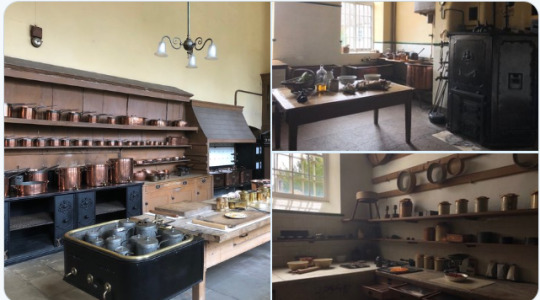
Credit Petworth NT Twitter
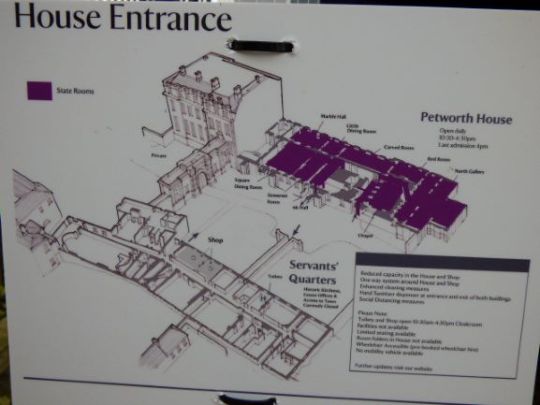
As I said before, only downstairs rooms are open.
Side Note: alterations to the property were carried out in the 1870s by Anthony Salvin, architect, who was also involved in Scotney Castle local to us, which is why the name rang a very loud bell.

The way the house tour is arranged now, you first encounter The Chapel. You’ve got to marvel at anything that dates back to approx 1300.
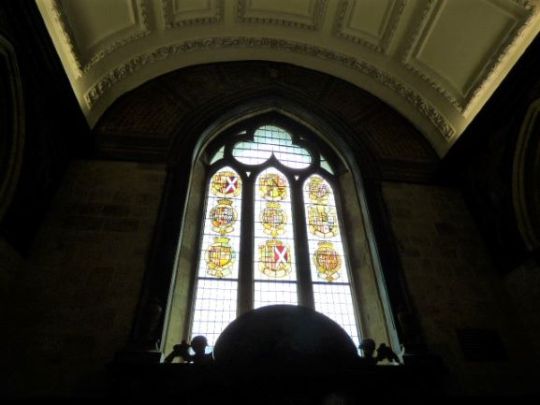
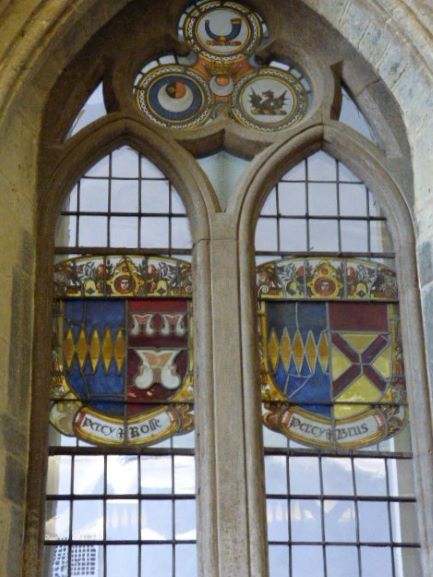
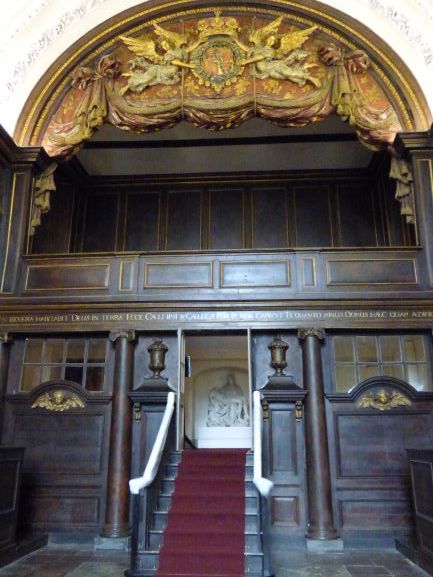
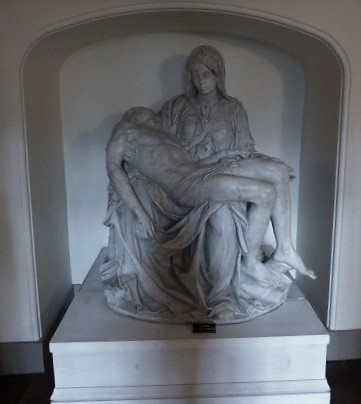
Pietà after Michelangelo Buonarroti
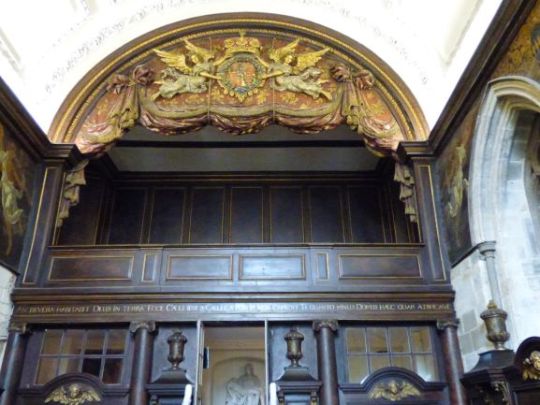
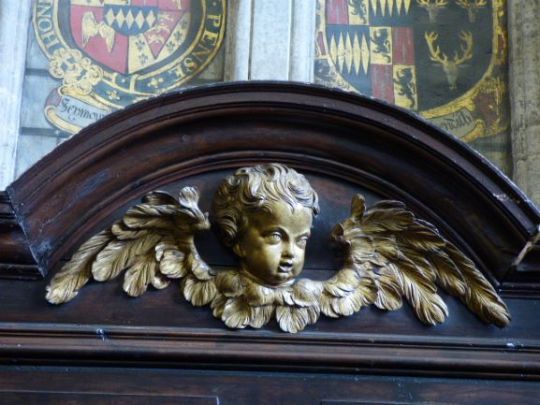
It may just be us. It might be the times, but I didn’t get much of a feeling of peace or of history. The Chapel, despite its ornate decorations seemed dull and dusty and, oh I don’t know, I feel churlish, but it didn’t give me what I expected, or any inspiration. The stained glass is impressive though with all the Percy family commemorations.
I’ve taken a few photos from Trip Advisor which hopefully show things in a different light.
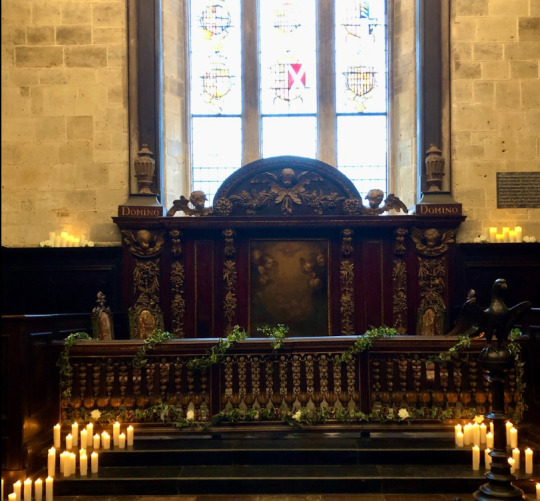
The Chapel at Christmas
Of course, the main attraction at Petworth is the purpose built North Gallery. Here are some of my photos and an indication of what it would usually look like.
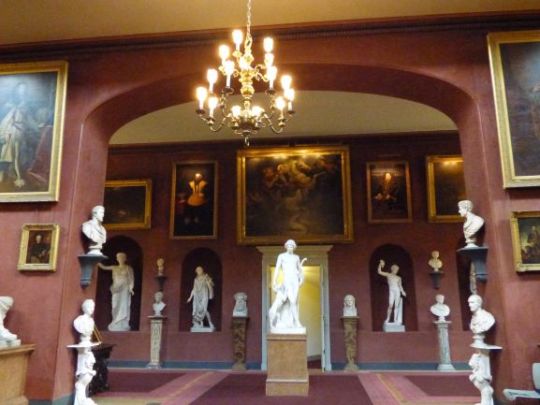
Wander around and take your pick
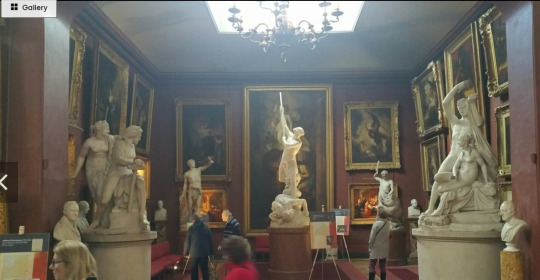
There have previously been sign boards with lots of information
Now, there’s nothing, so it seems more like ‘and here’s another statue’ or ‘here’s another landscape’
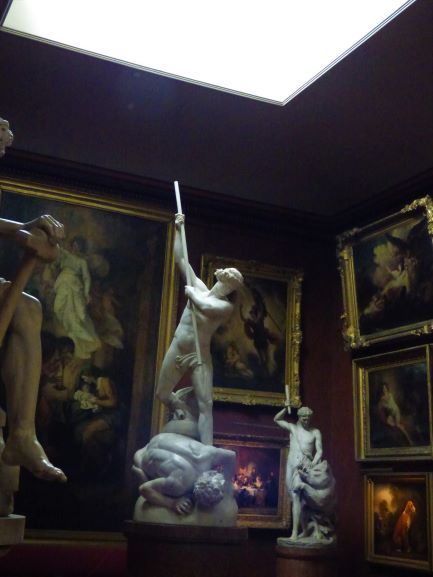
St Michael Slaying Satan John Flaxman RA
Carved from a single piece of marble apart from the spear.
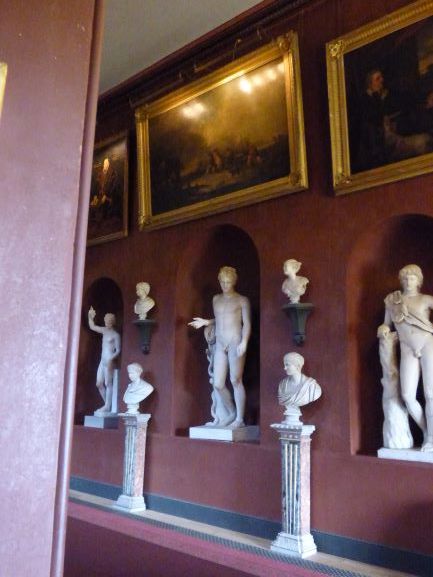
One thing I learned from the guide is demonstrated here by the middle statue, look carefully below.
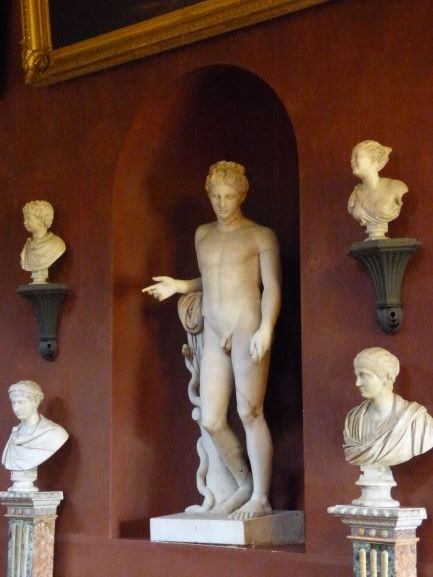
The body of a male with the face of a female - when art works and statues were all but plundered from Continental Europe, the authorities decreed that only damaged and broken statues were permitted to be exported, hence the practice of combining parts to make a whole. I wonder if anyone does a double take?
I can’t really work out why at least some of the information boards can’t be displayed because of Covid procedures. Knowing what you’re looking at makes such a difference.

My favourite piece in the whole house - I’m not exaggerating to say that it blew me away. There’s no sign or information so I’ll put good money on it being overlooked by most visitors.
I enquired and found out that this piece, which is approximately 10x12″ is attributed to Lady Jane Grey
Lady Jane Grey, also known as Lady Jane Dudley (after marriage) and as "the Nine Days' Queen", was an English noblewoman and de facto Queen of England and Ireland from 10 July until 19 July 1553. Jane was the great-granddaughter of Henry VII through his younger daughter Mary, and was a first cousin once removed of Edward VI
History of John Dudley, Duke of Northumberland for anyone who wants to brush up on their history.
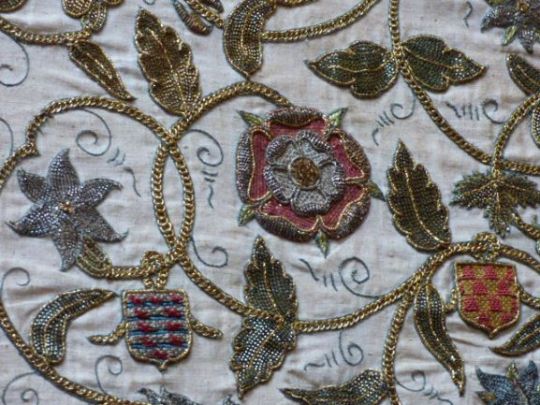
Lady Jane Grey embroidered panel
The colours on this work have held up well considering it must be AT LEAST 467 years old and more likely 470. Lady Jane Grey was only, what? 16 or 17 when she was executed, so this piece of work is reputedly the work of a teenager. It’s so accomplished, so fine, so magnificent that it almost leaves me speechless in awe and these pictures simply can’t do it justice. Frankly, despite my whinging about the visit, this item was worth the journey all by itself. What makes me feel sad about it is that people will walk by and perhaps not even know what it is or why it’s on display.

These are my photographs of the Molyneux Globe, a priceless treasure, which I believe has previously been on display in the North Gallery. Below is a Trip Advisor photo of the information you would usually see.
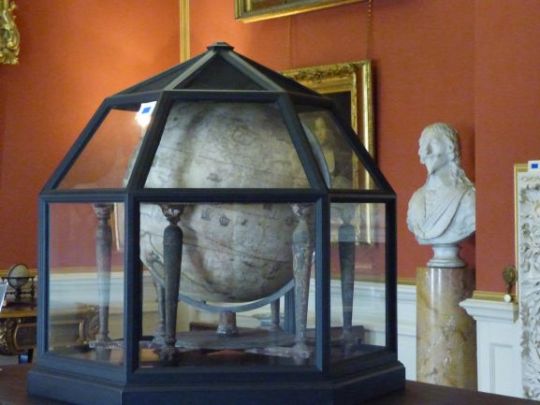
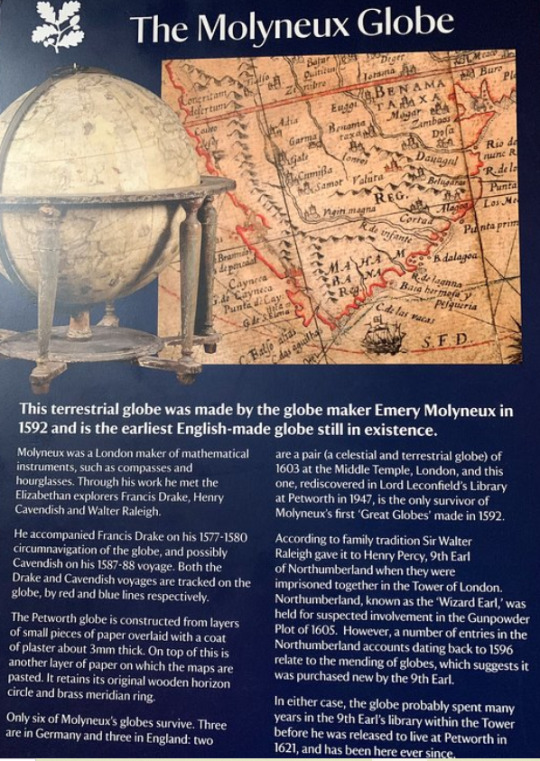
Emery Molyneux (/ˈɛməri ˈmɒlɪnoʊ/ EM-ər-ee MOL-in-oh; died June 1598) was an English Elizabethan maker of globes, mathematical instruments and ordnance. His terrestrial and celestial globes, first published in 1592, were the first to be made in England and the first to be made by an Englishman.
Molyneux was known as a mathematician and maker of mathematical instruments such as compasses and hourglasses. He became acquainted with many prominent men of the day, including the writer Richard Hakluyt and the mathematicians Robert Hues and Edward Wright. He also knew the explorers Thomas Cavendish, Francis Drake, Walter Raleigh and John Davis. Davis probably introduced Molyneux to his own patron, the London merchant William Sanderson, who largely financed the construction of the globes. When completed, the globes were presented to Elizabeth I. Larger globes were acquired by royalty, noblemen and academic institutions, while smaller ones were purchased as practical navigation aids for sailors and students. The globes were the first to be made in such a way that they were unaffected by the humidity at sea, and they came into general use on ships.
Molyneux emigrated to Amsterdam with his wife in 1596 or 1597. He succeeded in interesting the States-General, the parliament of the United Provinces, in a cannon he had invented, but he died suddenly in June 1598, apparently in poverty. The globe-making industry in England died with him.
Only six of his globes are believed still to be in existence. Three are in England, of which one pair consisting of a terrestrial and a celestial globe is owned by Middle Temple and displayed in its library, while a terrestrial globe is at Petworth House in Petworth, West Sussex.
Wikipedia
That’s interesting because I only associated the name Molyneux with the football stadium in Wolverhampton 😊 We live and learn.
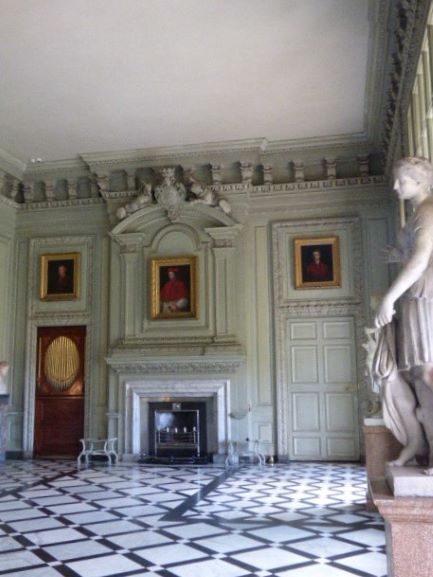
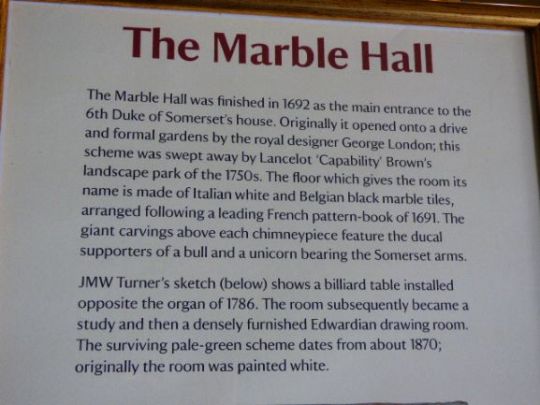
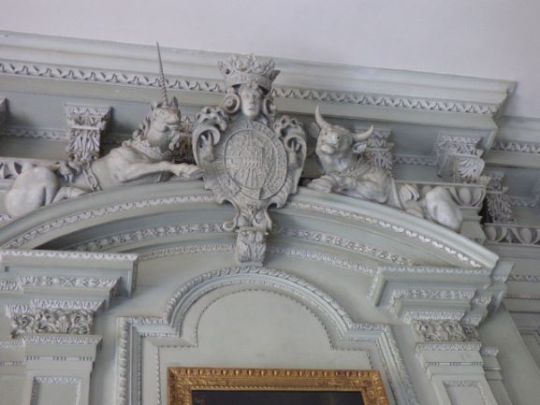
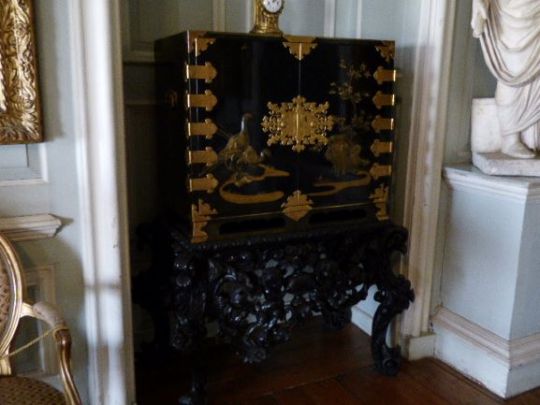
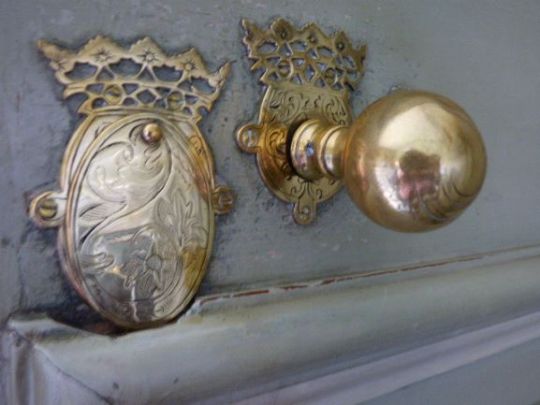
Bespoke locks and door plates - I have a particular interest in these wherever we visit - the craftsmanship and attention to detail is fabulous and I do like a marble floor as well.
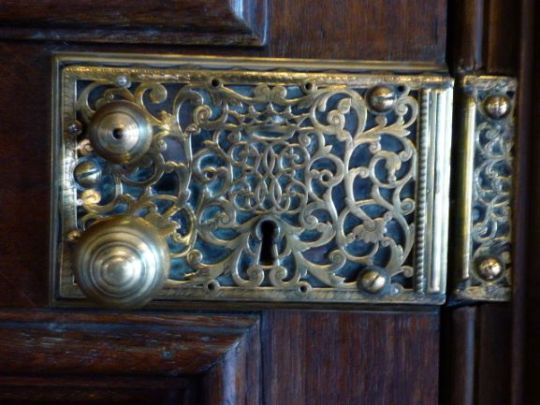
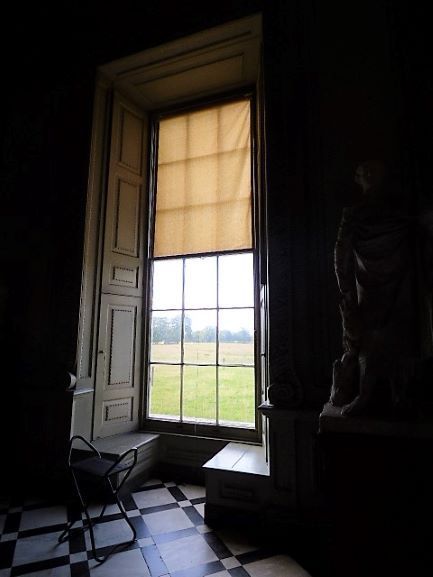
Lovely large windows giving views down to the lake
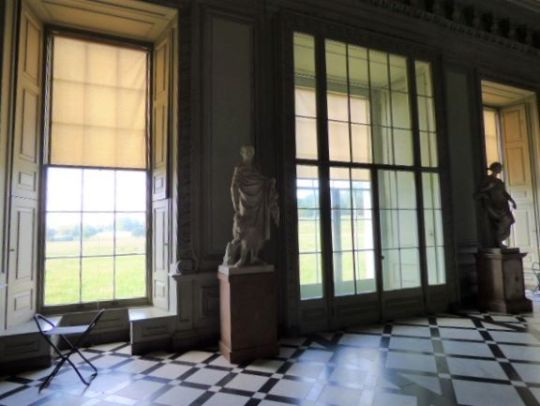
Apparently this was originally an entrance to the house - which is now the back of the house. Personally I’d expected a larger porch area and perhaps some kind of covered outer porch. Get me and my critique.
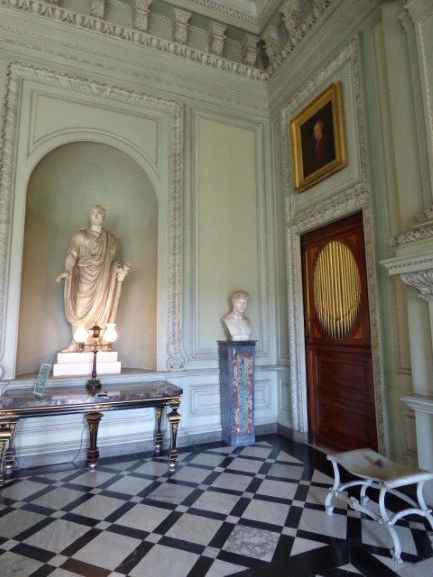
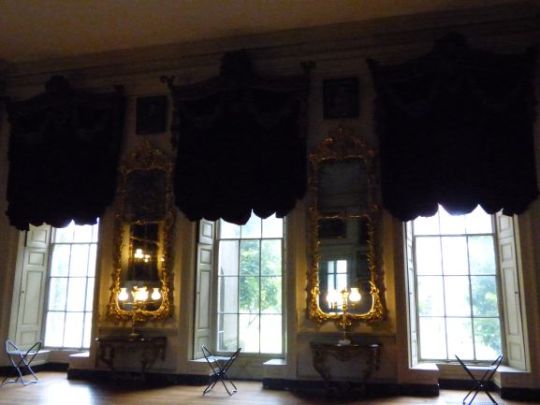
Below is my photograph of the carved hall. It’s not as per the original because two rooms were later knocked through into one with the carvings both modified and also supplemented (from elsewhere in the house and by new additions) Portraits were moved. At a later point in time the base panels were painted over. Every generation makes its own mark I suppose. Having just watched some TV footage of felling ancient woodland in Buckinghamshire to make way for HS2, I have to say, oftentimes things are better off left or preserved.
Read that and weep - in my case, literally.
Points to note are that when the lower level paintings were installed this was so that diners had good viewing from their seated position - clearly that effect is lost on us now and also, the large portraits beyond Henry VIII were originally on the demolished dividing wall and were hung here incorrectly i.e. not complying with the original intention of the artist’s composition of the family.
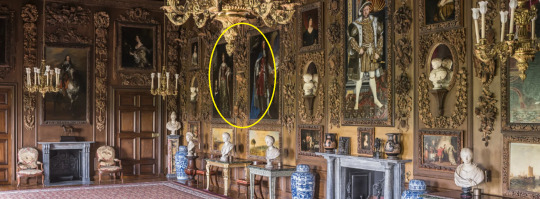
The Duke is pointing to his left which indicates his wife and child portrait should be hung to the viewer’s right side as we look at the scene. Originally they were hung on the (now removed) dividing wall
*Short Video about the Carved Room at Petworth House at the end of the Blog
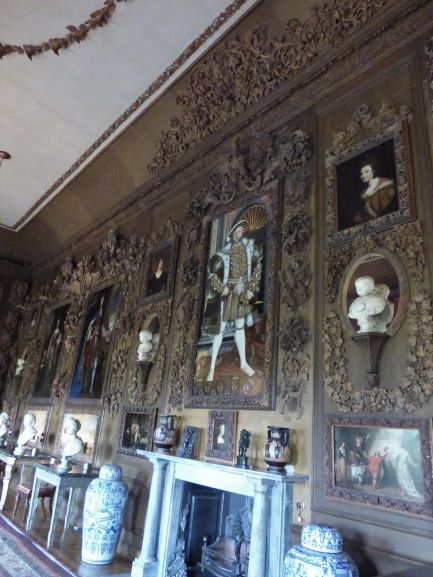
Carved work by Grinling Gibbons
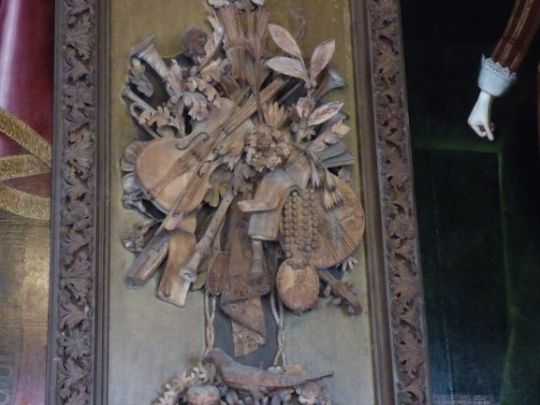
Apparently the carved sheet music is Henry Purcell’s Fairy Queen and can actually be played.
I’ve just discovered a You Tube documentary about Gibbons, which I’ll watch tomorrow. LINK.

So, so many photos. Well, if you’re unlikely to get a chance to visit for yourself, this is a mini tour. I’ve got a separate entry of some artwork snaps.
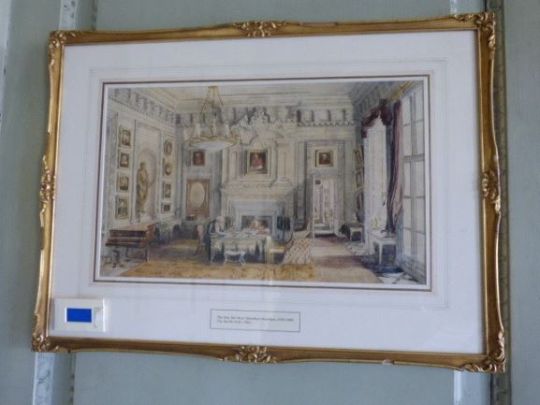
The smaller dining rooms are no longer presented as such but there are some information stands of Turner watercolours from his time at the house. I think other originals are in the Tate Britain collection. Shame as they look charming studies and at the risk of stating the obvious, very at home in this setting. I hadn’t realised how accomplished Turner was or how young he was when he started his studies. His youth was very challenging. A guide recommended the film Mr Turner, which starred Timothy Spall. That’s probably one for the long Winter nights.
*Note the blue monitoring device
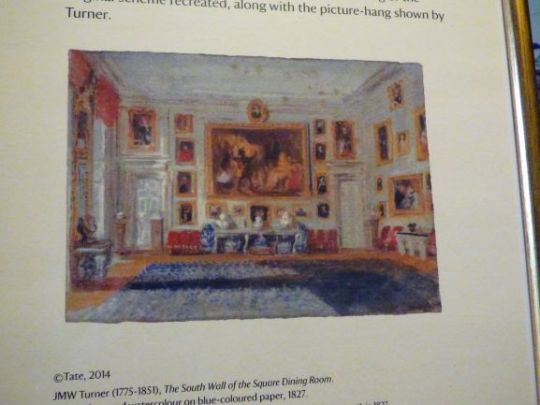
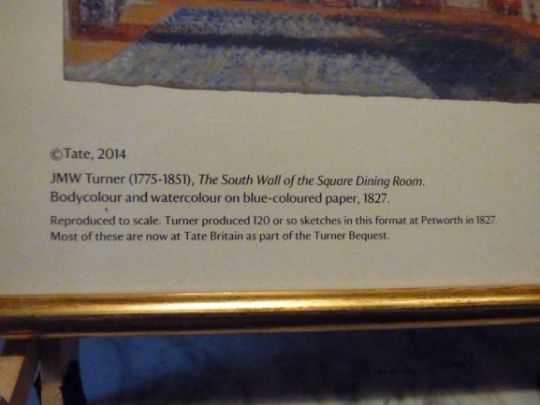

The Square Dining Room dressed for Christmas
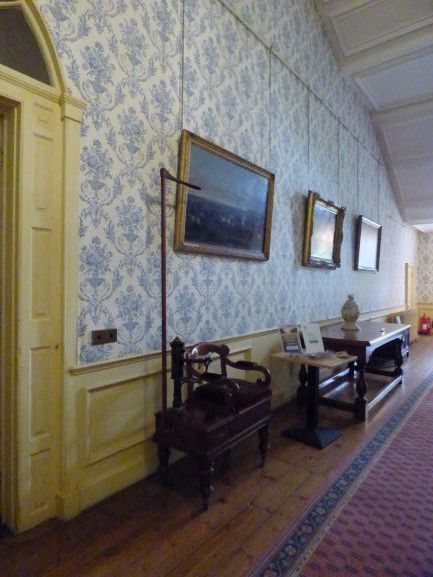
Weighing Scales
check out that link!
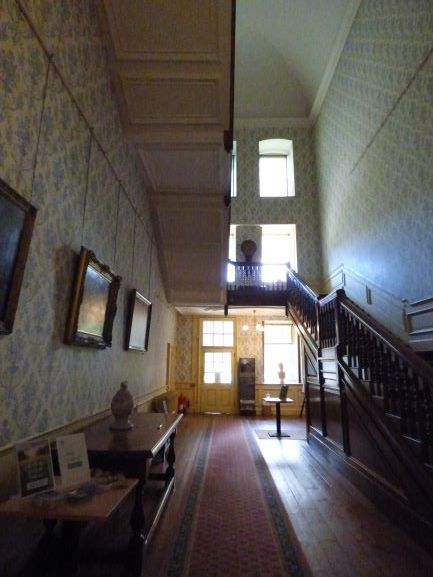
Sanitise your hands and exit to the front Courtyard and the Servants’ Quarters opposite.
♦ As always I’m not responsible for the content of outside links, in bold type which are not affiliated to my Blog
0 notes
Photo

Greystoke Castle, Cumbria.
A curious passage from Anne Lister’s Diary on 1824-07-31 after visiting the Druid’ Stones:

- at Penruddock we might have turned to our left to Grey stoke castle the late Duke of Norfolk’s, now Mr. Howard’s - the duke has divided his property sadly - the Cumberland estate about 17,000 a year all left to this Mr. Howard from the present duke -
“Mr. Howard” is Henry Howard (1802-1875) eldest son of Lord Henry Howard-Molyneux-Howard & Elizabeth Long and nephew of the 12th Duke of Norfolk. A British Member of Parliament 1824-1826, High Sheriff of Cumberland and a first-class cricketer. Greystoke Castle was inherited at Lord Henry’s death 17 June, 1824 - fresh gossip being just over a month prior to Anne Listers near visit in July.
Lord Henry Howard was the younger brother of Bernard Howard, 12th Duke of Norfolk and was acting Deputy Earl Marshal during the coronation of King George IV, appointed due to the Duke being a Roman Catholic recusant. Mr. Howard’s sister Henrietta would marry the 3rd Earl of Carnarvon and become Countess Henrietta (Howard-Molyneux) Carnarvon and Grand-Mother to Henry Herbert, 5th Earl of Carnarvon notable for the excavation of Tutankhamen’s tomb.
Interestingly, The 13th Duke of Norfolk, Mr. Howard’s uncle, married Lady Charlotte Leveson-Gower daughter of the 1st Duke & Duchess of Sutherland - The Duchess being Elizabeth Leveson-Gower daughter of the 18th Earl of Sutherland. It has been claimed that Elizabeth (Walker) Sutherland’s husband, Capt. George Mackay Sutherland was descended from the line of John Gordon the 16th Earl of Sutherland by way of Lt. Col. James Sutherland a possible illegitimate son of the 16th Earl and Capt. G.M. Sutherland’s grand-father.
Ten years into the future Anne would be a distant (distant) relative (through marriage) of Mr. Howard! (Maybe.) Anne’s on the mark as usual -- Sadly, ‘Mrs. Lister’ as Ann would call her, would be closer to the property if it remained with the Duke.

Elizabeth (Sutherland) Leveson-Gower, Duchess of Sutherland by George Romney (Mother of Charlotte Fitzalan-Howard, Duchess of Norfolk 1815-1842)
The Duchess of Norfolk is the original title created directly for Margaret as the daughter and eventual sole heir of Thomas of Brotherton, eldest son of King Edward I of England by Margaret of France (second wife). In 1338, Margaret succeeded to the earldom of Norfolk and the office of Earl Marshal and 29 September 1397 was created (1st) Duchess of Norfolk for life. The (2nd) Duchess of Norfolk was Elizabeth Fitzalan, wife of Thomas de Mowbray, the 1st Duke of Norfolk.
Charlotte FItzalan-Howard, Duchess of Norfolk is notable for translation work of Rousseau, Gay, Mozart, Arnold, Arne, and Handel, the 166 piece collection currently held by Yale University. (see Wiki)
0 notes
Text
Sea, Sex and Sanditon
read it on the AO3 at https://ift.tt/2CBoqgh
by Mermaid70 (Smiff)
This modern AU is set in a down-at-heel seaside town on the Sussex coast near Brighton, in and around Sanditon Head, the local secondary school. Sidney Parker is a few years older than in the series and already quite improved. He just needs a good woman to help him navigate his complex, busy life. Charlotte Heywood is also a few years older and is moving to Sanditon to start her new career. Jane Austen’s original Sanditon is thought to be have been based on Worthing, now a sprawling conurbation with a pebbly beach. The TV series was filmed in the South West, a very different landscape with beautiful sandy beaches. I decided to bring the action back to Sussex and its pebbles that kill your feet when you walk on them. Being British, the characters swear a lot, drink a lot of tea and spend a lot of time in the pub. Some Jane Austen characters also make fleeting appearances. The action takes place in the present, but there is no Covid (hurrah). Most characters get a happy ending, but it does get a little dark along the way. Blame Andrew Davies. It also gets a little steamy... but mostly I hope it’s romantic and uplifting. Special thanks and love to the Bath ladies – you know who you are.
Words: 5985, Chapters: 3/50, Language: English
Fandoms: Sanditon (TV 2019), Sanditon - Jane Austen
Rating: Mature
Warnings: Creator Chose Not To Use Archive Warnings
Categories: F/M, Multi
Characters: Sidney Parker, Charlotte Heywood, Esther Denham, Clara Brereton, Edward Denham, Tom Parker (Sanditon), Mary Parker (Sanditon), Diana Parker (Sanditon), Arthur Parker, Lord Babington (Sanditon), Mrs. Griffiths (Sanditon), Reverend Hankins (Sanditon), Jenny Parker (Sanditon), Alicia Parker, Henry, Georgiana Lambe, Otis Molyneux, Susan Parker, Mr. Crowe (Sanditon), James Stringer, Julia, Lady Denham (Sanditon)
Relationships: Charlotte Heywood & Sidney Parker, Lord Babington/Esther Denham, Clara Brereton/Edward Denham, Georgiana Lambe/Otis Molyneux
Additional Tags: Alternate Universe - Modern Setting
read it on the AO3 at https://ift.tt/2CBoqgh
0 notes
Photo

Marlene Dietrich and Tamara Matul leaving Molyneux, 1930s
Edward Henry Molyneux (pronounced "Molinucks"; 5 September 1891 in Hampstead, London – 23 March 1974 in Monte Carlo) was a leading British fashion designer whose salon in Paris was in operation from 1919 until 1950.
108 notes
·
View notes
Text
Cristóbal Balenciaga Eizaguirre nasceu em 21 de Janeiro de 1895 em Getaria, no país Basco, na Espanha.
É tido como um dos melhores estilistas que já houve, especialmente entre os profissionais da moda.
Filho de um pescador e uma costureira, aprendeu a trabalhar muito cedo.
Seu pai faleceu quando ainda era um menino e a partir de então sua mãe passou a sustentar a família sozinha.
Martina Eizaguirre Embil – Mãe de Cristóbal Balenciaga.
Felizmente sua clientela incluía as mulheres mais bem vestidas da cidade. Graças a isso, Balenciaga não só aprendeu a costurar cedo, como também pôde começar vestindo mulheres de importância.
Primeiro modelo feito; Traje feito em 1912 em San Sebastian.
Primeiro modelo feito; Traje feito em 1912 em San Sebastian. (detalhe)
Quando ainda era um pré adolescente (por volta dos 12 anos) desenhou um vestido para a Marquesa de Casa Torres; ela gostou tanto do trabalho do jovem que não só tornou-se sua primeira cliente como também resolveu apadrinha-lo.
This slideshow requires JavaScript.
Com a ajuda da Marquesa, Balenciaga foi estudar alfaiataria em San Sebastian, uma cidade litorânea próxima a Getaria. Em 1917 se formou e em 1924 abriu sua primeira Casa de Moda, chamada Cristobal Balenciaga, em 1927 abriu outra loja, chamada Eisa, o diminutivo do nome de solteira de sua mãe.
Croquí da loja Eisa.
Primeira loja.
Em pouco tempo Balenciaga conseguiu destaque entre os estilistas da Espanha; logo abriu duas filiais de sua loja e maison (que vendia não só roupas originais como réplicas autorizadas) em Madrid(1933) e Barcelona(1935) e também passou a vestir a aristocracia e realeza espanhola.
No começo da década de 30 Balenciaga já era considerado o melhor estilista da Espanha.
Cristóbal Balenciaga em seu ateliê, em Paris 1968 Foto por Henri Cartier-Bresson.
Quando a guerra civil espanhola estourou, em 1936, Balenciaga mudou-se para Paris.
Em 1937, que abriu uma loja na Avenida George V. Conseguiu chamar a atenção dos parisienses e começou a se destacar entre os melhores dos melhores.
Sua loja rapidamente tornou-se a mais cara e exclusiva de Paris. Seu treinamento como alfaiate foi um dos motivos, ele era o único que sabia não só desenhar, como cortar, costurar e finalizar suas roupas com maestria.
Sua fonte de inspiração mais explorada foi a cultura espanhola. Baseava suas roupas tanto em dançarinas de flamenco, as roupas e utensílios dos toureiros (como a bandeira que usavam), em artistas como Diego Velazquez, Francisco de Goya e Francisco Zurbarán bem como no uso da renda preta dos xales de mantilha usados pelas espanholas durante ocasiões especiais, como a Semana Santa Espanhola. Outras fontes de inspiração que vale ressaltar são o catolicismo e seus símbolos e a indumentária histórica.
This slideshow requires JavaScript.
Em seu atelier havia a influência de elementos do séc. XIV que ele conseguia reproduzir fielmente das revistas e livros especializados que mantinha no local.
Nessa época o que chamou a atenção não foram só as obras de Balenciaga, mas como ele as apresentava e sua maneira de ser.
Dovima, usando Balenciaga, no café Les Deux Magots, Paris, 1955 por Richard Avedon.
Diferente da maioria dos estilistas da época, Balenciaga era mais retraído e não gostava de entrevistas.
Três das mais notáveis diferenças de comportamento dos demais foram:
A famosa decisão, em 1957, de não lançar seus produtos nas semanas de lançamentos e de esperar 4 semanas para lança-los com 1 dia para a compra do varejo. Ele esperava que assim podia evitar as continuas cópias de seus modelos. Givenchy o apoiou seguindo seu exemplo e se tornando o único que dividia as páginas de revistas com Balenciaga. Seus apoiadores tentaram lhe alertar que outros estilistas “de primeira linha”, poderiam copiar suas silhuetas, dizendo serem criações suas, por incrível que pareça até a Maison Dior estava nesta lista. Porém, como Balenciaga não se importava com a cobertura da imprensa ele não revogou sua decisão até 1967 quando ambos, Givenchy e ele, voltaram a desfilar suas criações junto com os outros estilistas.
Outro detalhe era o de que além de apresentar seus modelos numa data diferente ele não permitia a presença da imprensa, autorizando somente a Vogue a publicar fotos pré selecionadas por ele.
Como dito, com a união da diferença de data e a falta de cobertura da imprensa, ele ganhava espaço exclusivo em revistas como Vogue e Harper’s Bazaar, que só dividia com Givenchy, o único que o seguiu.
Outra característica particular, era que ele não concordava com o Sindicato da União da Alta Costura, e portanto, mesmo sendo extremamente respeitado, ele nunca foi membro do Sindicato, não podendo ser considerado “Alta Costura“.
Dirigido por Hitchcock (1951) por Gjon Mili ,para revista LIFE, roupas por Cristóbal Balenciaga.
Lisa Fonssagrives-Penn usando Balenciaga – Foto por Irving Penn
Vestido de noite por Cristóbal Balenciaga, 1951.
Vestido de noite por Cristóbal Balenciaga, 1954.
Vestido por Cristóbal Balenciaga, 1956.
Vestido por Cristóbal Balenciaga, por volta de 1955.
O sucesso de Balenciaga não veio só por que ele conseguia imaginar e reproduzir peças de roupas lindas, mas também devido ao seu exímio talento de alfaiate, e posteriormente, pela sua capacidade e criatividade de repensar a silhueta feminina, moldando cada vez mais o corpo de maneira inusitada.
Na sua época a crítica separava os estilistas da seguinte maneira: Chanel era “A francesa”, Elsa Schiaparelli era “A italiana”, Edward Molyneux “O irlandês”, Robert Piguet “O suiço”, Main Rousseau Bocher “O americano”, e Balenciaga era considerado “O espanhol”.
Até mesmo entre os colegas seu talento e ouvre eram considerados da melhor qualidade; Dior e Chanel, por exemplo, apesar de todas as diferenças que tinham, concordavam que Balenciaga era o melhor estilista dentre todos.
Chanel disse que somente ele podia ser considerado um estilista completo, pois somente ele sabia executar todas as fases da construção de uma roupa. Ela e os outros eram somente designers.
Já Dior disse que a Alta Costura era uma orquestra da qual todos os estilistas eram os músicos que seguiam o comando do Maestro Balenciaga.
Outro detalhe muito importante da vida profissional de Balenciaga, era a de que ele foi professor e mentor de estilistas de grande renome, sendo algum deles: Oscar de La Renta, Andre Courreges, Emanuel Ungaro e seu protegido e mais notável aprendiz, Hubert de Givenchy, novamente, o único que o apoiou na decisão de ir contra as regras do Sindicato da União da Alta Costura e a de desfilar suas criações numa data diferente da dos demais estilistas.
Apesar do grande sucesso que fazia, vale lembrar que Balenciaga realmente alcançou o reconhecimento internacional depois da Segunda Guerra Mundial quando já possuía 38 anos de trabalho e experiência.
Estudando o trabalho de Balenciaga nota-se como o mesmo era uma constante. A cultura espanhola foi usada como inspiração de diversas coleções ao longo de sua carreira; e muitos de seus modelos mais conhecidos foram resultado da continua experiência de um modelo anterior, como por exemplo o vestido Camisa que abriu caminho para o vestido Saco (considerado por alguns como o mesmo modelo de vestido) que, por sua vez, abriu caminho para o vestido Baby-Doll, que é considerado o pai dos mini vestidos dos anos 60.
Assim como outros estilistas, Balenciaga também se encantou pela modelagem japonesa dos kimonos, depois de estuda-las ele conseguiu produzir modelos originais com aspectos de suas construções. Um de seus modelos mais famosos, o vestido Tulipa, foi fruto do interesse de Balenciaga pela vestimenta japonesa.
Vestido Tulipa, inspiração dos Kimonos – 1965.
Balenciaga é um dos estilistas que partia do princípio de que a roupa começa a ser feita a partir do tecido. Ou seja, não adianta tentar seguir um croqui se o tecido não é o ideal para o modelo.
Conhecedor de diversos tecidos tinha preferência pelos mais estruturados. Mas também ficou conhecido pelo belíssimo trabalho que fazia com a renda. E assim como Yves Saint Laurent, fechou pareceria com a fábrica de tecidos Abraham para a criação de tecidos como o Gazar de seda.
Cocktail dress, 1952 – Inverno, feito em Paris.
Cocktail dress e casaco, 1964 – Inverno, feito em Paris.
Cocktail dress e casaco, 1964 – Inverno, feito em Paris.
Cocktail dress, 1963–64 – Inverno, feito em Paris.
Cocktail Dress, por volta de 1960.
Cocktail Dress, por volta de 1960 (detalhe).
Cocktail dress, 1953 – Inverno feito em Paris.
Cristóbal Balenciaga para Balenciaga, 1957.
Vestido para noite – Inverno, 1966-1967.
Vestido longo ,1946 feito em Paris.
Vestido para noite curto, 1967 feito em Paris.
Finalmente, devo ressaltar o trabalho que fez com acessórios como os chapéus e suas linhas de perfumaria.
This slideshow requires JavaScript.
Em 1960 fez o vestido de noiva da futura rainha da Bélgica, Fabiola Fernanda María-de-las-Victorias Antonia Adelaida, que também era neta da Marquesa de Casa Torres, sua primeira cliente.
Vestido de noiva da Rainha Fabiola da Bélgica.
Vestido de noiva da Rainha Fabiola da Bélgica.
Balenciaga decidiu aposentar-se em 1968, chocando suas clientes que ficaram extremamente tristes com a noticia, como, segundo a lenda, foi o caso da Condessa Mona Bismarck que se trancou em seu quarto por três dias quando ficou sabendo da decisão do estilista. Outra cliente com um caso curioso sobre Balenciaga foi Jacqueline Kennedy, que era fã do trabalho do estilista e a contra gosto do marido, o então presidente dos Estados Unidos, John F. Kennedy, comprava modelos do estilista espanhol, apoiando a industria espanhola, na visão do marido, o que o não o agradava. Sua compras por fim, acabavam sendo paga pelo sogro, Joseph Kennedy.
4 anos depois da aposentadoria Balenciaga faleceu em 24 de março de 1972.
Sua maison ficou fechada até 1986, quando foi comprada por Jacques Bogart S.A. que colocou Michel Goma como estilista chefe; Goma ficou na casa por 5 anos, em 1992 Josephus Thimister assumiu o cargo. Thimister foi substituído por Nicolas Ghesquière em 1997, que permaneceu na casa durante a compra da mesma pelo grupo Kering. Em 2012 Ghesquière foi substituído por Alexander Wang que ficou na casa por dois anos e foi substituída em 2015 pelo atual Demna Gvasalia.
Balenciaga foi responsável por moldar a silhueta feminina de maneiras diversas, e dentre seus modelos mais conhecidos estão o vestido Saco, o vestido Baby-Doll, o vestido Envelope, o vestido Túnica, o vestido Camisa, o vestido tulipa, o vestido Sari e o chapéu véu, feito para acompanhar os vestidos de noiva em 1967, e a manga melão; há também os boleros inspirados nas roupas dos toureiros e o vestido Infanta inspirado em um dos quadros de Diego Velázquez.
This slideshow requires JavaScript.
Concluindo, Balenciaga foi um estilista a frente do seu tempo com um talento pouco visto em outros. Foi importante em sua época e continua sendo uma grande fonte de inspiração para profissionais da moda de todo o mundo.
Recomendo uma pesquisa mais profunda sobre o assunto.
Elise Daniels com artistas de rua, traje por Balenciaga, Le Marais, Paris, 1948. Foto de Richard Avedon.
Elise Daniels com artistas de rua, traje por Balenciaga, Le Marais, Paris, 1948. Foto de Richard Avedon.
Bibliografia: Allan, Georgina O’Hara; Enciclopédia da Moda: De 1840 À Década de 90: Companhia das Letras, 2010.
https://artsandculture.google.com/entity/crist%C3%B3bal-balenciaga/m04334w?categoryid=designer (Todos os artigos)
https://pt.wikipedia.org/wiki/Cristóbal_Balenciaga
https://pt.wikipedia.org/wiki/Balenciaga
https://en.wikipedia.org/wiki/Balenciaga
https://en.wikipedia.org/wiki/Cristóbal_Balenciaga
https://www.etiquetaunica.com.br/blog/balenciaga/
https://moda.culturamix.com/roupas/cristobal-balenciaga-o-arquiteto-da-costura
https://www.fragmentosdemoda.com/moda/a-obra-do-arquiteto-da-costura-cristobal-balenciaga-em-exposicao-inspiradora-no-museu-de-londres.html
https://www.infopedia.pt/$cristobal-balenciaga
http://almanaque.folha.uol.com.br/balenciaga.htm ( http://almanaque.folha.uol.com.br/balenciaga_historia.htm )
https://artsandculture.google.com/exhibit/JQLip5M31W1sJg?hl=pt-BR
http://mundodasmarcas.blogspot.com/2010/05/balenciaga.html
https://www.kering.com/en/houses/couture-and-leather-goods/balenciaga/history/
https://www.fq.co.nz/fashion/short-history-balenciaga
https://wwd.com/fashion-news/designer-luxury/a-balenciaga-timeline-10256184/
https://www.britannica.com/biography/Cristobal-Balenciaga
https://www.elle.com/uk/fashion/trends/articles/g31790/balenciagas-most-iconic-moments/
https://www.anothermag.com/fashion-beauty/10650/balenciaga-a-brief-history-of-those-hips
http://www.icon-icon.com/en/balenciagas-baby-doll-dress/
https://www.balenciaga.com/ee/dress_cod49283322vt.html
https://www.vam.ac.uk/articles/introducing-cristobal-balenciaga
https://www.metmuseum.org/toah/hd/bale/hd_bale.htm
https://www.ngv.vic.gov.au/Spanish_Ed/artwork_files/pdfs/artsheet_balenciaga_LR_FINAL.pdf
http://revistamarieclaire.globo.com/Revista/Common/0,,EMI188353-17642,00-EXPOSICAO+EM+NOVA+YORK+CONTA+A+TRAJETORIA+DO+ESTILISTA+ESPANHOL+BALENCIAGA.html
https://igotbugsinmyhead.wordpress.com/2012/04/12/a-historia-da-balenciaga-atraves-de-ilustracoes-e-campanhas/
https://fashiontribes.typepad.com/fashion/2011/01/ole-the-new-balenciaga-exhibit-brings-the-pulse-of-spain-to-the-de-young-museum.html
https://fashiontribes.typepad.com/fashion/2011/01/ole-the-new-balenciaga-exhibit-brings-the-pulse-of-spain-to-the-de-young-museum.html
http://revistamarieclaire.globo.com/Revista/Common/0,,EMI188353-17642,00-EXPOSICAO+EM+NOVA+YORK+CONTA+A+TRAJETORIA+DO+ESTILISTA+ESPANHOL+BALENCIAGA.html
https://grantkgibson.com/2011/03/balenciaga-at-the-de-young/
ttps://vogue.globo.com/lifestyle/cultura/noticia/2017/03/no-ano-do-centenario-da-balenciaga-duas-exposicoes-relembram-genialidade-do-estilista-espanhol.html
https://www.youtube.com/watch?v=sSYpgIonvQ4
https://www.youtube.com/watch?v=NBwIv6_l8wE
Balenciaga, Cristóbal Cristóbal Balenciaga Eizaguirre nasceu em 21 de Janeiro de 1895 em Getaria, no país Basco, na Espanha.
#abraham#alfaiate#arte#balenciaga#bolero#chanel#Cristóbal Balenciaga#cultura espanhola#design#dior#Eiza#espanha#espanhola#estilista#gazar#gênio#moda#modelagem#renda#silhueta#tecido#vestido Baby-Doll#vestido camisa#vestido envelope#vestido saco
0 notes
Photo


By Philippa Campsie
“Mona (or Frances) Strader was the daughter of a Kentucky horse breeder and trainer, Robert Strader. Her parents divorced when she was four or five years old. She lived first with her maternal grandmother, then with her paternal grandmother. The former was later declared insane and sent to an asylum. An uncle suffered the same fate. Another uncle shot a prostitute and then turned the gun on himself. A third uncle died in a hunting accident. Only her father seemed to be a steady influence in Mona’s life, and he was not always around.
The only way out of this nightmare was marriage. Mona’s starter husband was Henry James Schlesinger, son of the richest man in Wisconsin. She’d met him through her father’s racing contacts. She was 19; he was 39. The marriage was not a success. In 1920, Mona sought a divorce after three years of marriage, and left her young (and only) son in her husband’s custody in Milwaukee.
At this point, she had already met husband No. 2, a wealthy banker called James Irving Bush, said to be the “handsomest man in America.” The two married in New York in 1921; she was 24; he was 38. Fairly soon, Mona discovered that her new husband behaved appallingly when he was drunk, and he was often drunk. This time she went to Paris to obtain a divorce.
Back in New York, Mona started up a fashion venture with a friend called Laura Curtis, who was engaged to be married to Harrison Williams, one of the richest men in the United States (a big step up from the richest family in Wisconsin). Rumours abounded that Mona “stole” Harrison’s affections while her friend was out of town. In fact, Laura Curtis jilted Harrison Williams, leaving him free to marry Mona. But the rumours won and it took Mona some time to live them down.
Three years later, the stock market crash reduced her husband’s fortune of $680 million to a paltry $5 million. The Harrison Williamses apparently failed to notice their change in fortunes. They had a Long Island mansion at Oak Point; a New York town house on Fifth Avenue; an all-white house decorated by Syrie Maugham in Palm Beach; a Paris apartment on the rue Pouquet; and a villa with a large garden on the Island of Capri in the Bay of Naples called Il Fortino.
Meanwhile, Mona had become the darling of the fashion mavens. Cecil Beaton never tired of photographing or drawing her, although he said he could never fully capture the beauty of her huge aquamarine eyes and extraordinary silver hair.
Vogue and Harper’s Bazaar published endless stories about her exquisite life and clothes. And in 1933, the Paris couturiers Molyneux, Lanvin, Vionnet, Chanel and Lelong voted her the world’s “best-dressed woman.”
Mona was a “dandy” in the sense that her greatest creation, her work of art, was her own appearance and her lifestyle. That was what she did. That was all she did. Nobody ever saw her reading a book. Nobody ever credited her with a witty remark. If she wrote letters, they were unquotable. She never learned French or Italian, despite years spent in those countries.
What Mona created was herself. After her chaotic and unhappy childhood, her achievement was to control every aspect of her life. Her houses were perfect. Her clothes were perfect. Her dinners were perfect. Her flowers were perfect (she loved gardening and grew her favourite flowers from Kentucky and England in the gardens in Capri, even though every drop of fresh water had to be brought from the mainland). Nothing less than perfection was acceptable.
In 1943, Dali painted her in an extraordinary portrait. In the first version, he painted her naked, but she objected, so he painted her wearing rags (but with her ever-present pearls), surrounding by objects from antiquity that evoke a certain menace. Apparently Mona loved it and it graced her Paris house on the avenue New York until a few weeks ago.Salvador DalÍ's portrait of Mona Bismarck
Harrison Williams died in 1953. His obituary in the New York Times noted: “The only reason the Harrison Williamses don’t live like princes…is that princes can’t afford to live like the Harrison Williamses.”
The following year, Mona acquired the final feature her life had lacked: an aristocratic title. She married Count Edward von Bismarck, the grandson of the German chancellor of that name. Eddie was thought to be gay, but he had been Mona’s long-time friend and confidant. He apparently believed that he was dying of stomach cancer, and she may have married him assuming it would be a very short marriage and a long widowhood. Eddie lived for another 16 years.
By this time, Mona had lost her trademark silver hair. In the 1950s, according to most sources, she started to dye her hair brown, and her friends were astonished that she would give up her most recognizable feature. Maybe, in middle age, she no longer wanted to be so recognizable.
Eddie died in 1970. Mona then married his doctor, Umberto de Martini, 14 years her junior. Big mistake. She thought he would look after her as she aged, as he had looked after Eddie; he thought she would fund his extracurricular activities, which included a mistress in England. When in 1979, he accidentally drove his Alfa Romeo off a bridge near Naples (her friends made the inevitable joke about “Martini on the rocks”), she was delivered from a burdensome marriage. She went back to using Bismarck as her surname.
She lived for four more years, dying in 1983 at her house on the avenue New York, aged 86. The terms of her will would have created an arts foundation that encompassed her Paris house and the artworks in her villa at Capri. But she had forgotten her son by her first marriage, who contested the will and demanded an inheritance larger than the measly million or so she had assigned him. The Capri villa and its contents had to be sold, along with other parts of her collection.
Mona created herself. And when she died, her greatest achievement in life disappeared. Beauty and a glamorous lifestyle do not survive when the individual who brings them to life has gone. And exotic gardens may not survive the death of a gardener. This, I think, is why so few people have written about her, and why there is no full-length biography.
Be careful what you wish for. She wished for riches and control; she had riches during her life, but she could not quite control her legacy.
0 notes
Text
23 marzo … ricordiamo …
23 marzo … ricordiamo … #semprevivineiricordi #nomidaricordare #personaggiimportanti #perfettamentechic
2021: George Segal, attore e musicista statunitense. (n. 1934) 2020: Lucia Bosè, pseudonimo di Lucia Borloni, è stata un’attrice italiana naturalizzata spagnola, eletta Miss Italia 1947. È morta a causa di una polmonite complicata dal COVID-19. (n. 1931) 2019: Domingos de Oliveira, è stato un attore, drammaturgo, regista, sceneggiatore e regista teatrale brasiliano. Laureato in ingegneria, non…

View On WordPress
#23 marzo#Adrienne Koenig#Balenciaga#Cédric Ragot#Charlotte Ganahl Walker#Charlotte Walker#Cino Tortorella#Cristobal Balenciaga#Debbie Lee Carrington#Deborah Lee Carrington#Domingos de Oliveira#Edward Henry Molyneux#Edward Molyneux#Elizabeth Taylor#Felice Tortorella#George Segal#Gian Vittorio Baldi#Giulia Anna Masina#Giulietta Masina#Ken Howard#Kenneth Joseph "Ken" Howard Jr.#Lauretta Masiero#Lola Albright#Lola Jean Albright#Lucia Borloni#Lucia Bosè#Mae Murray#Paco Rabanne#Ricordiamo
0 notes
Text
Edward Molyneux - Molyneux Paris
Edward Molyneux, l'uomo che dipinse i suoi abiti. #edwardmolyneux #stilista #moda #fashion #creatoredistile #creatoredimoda #storiadellamoda #perfettamentechic
Edward Henry Molyneux, ma conosciuto come Edward Molyneux, è stato un importante stilista e profumiere londinese, di origine irlandese, soprannomato “Il Capitano“, il cui salone parigino è stato operativo dal 1919 al 1950. Era caratterizzato come un designer modernista. Nacque da una famiglia irlandese di origine ugonotta il 5 settembre 1891 a Hampstead, Londra. Suo zio era il maggiore Edward…

View On WordPress
#14 rue Royale#1WW#2WW#5 rue Royale#Ailsa Mellon Bruce#Alta Società#Balmain#Beaumont College#Cannes#Captain by Molyneux#Carnations in vase#Caroline Milbank#casa di moda#case reali#Christian Dior#Costa Azzurra#Couturier#Creative Director#Creatore della moda#Creatore di moda#Creatore di stile#crinolina#designer#Dior#Duca di Kent#Duca di Wellingtonie#Duca di Windsor#duchessa di Windsor#Edward Henry Molyneux#Edward Mary Joseph Molyneux
0 notes